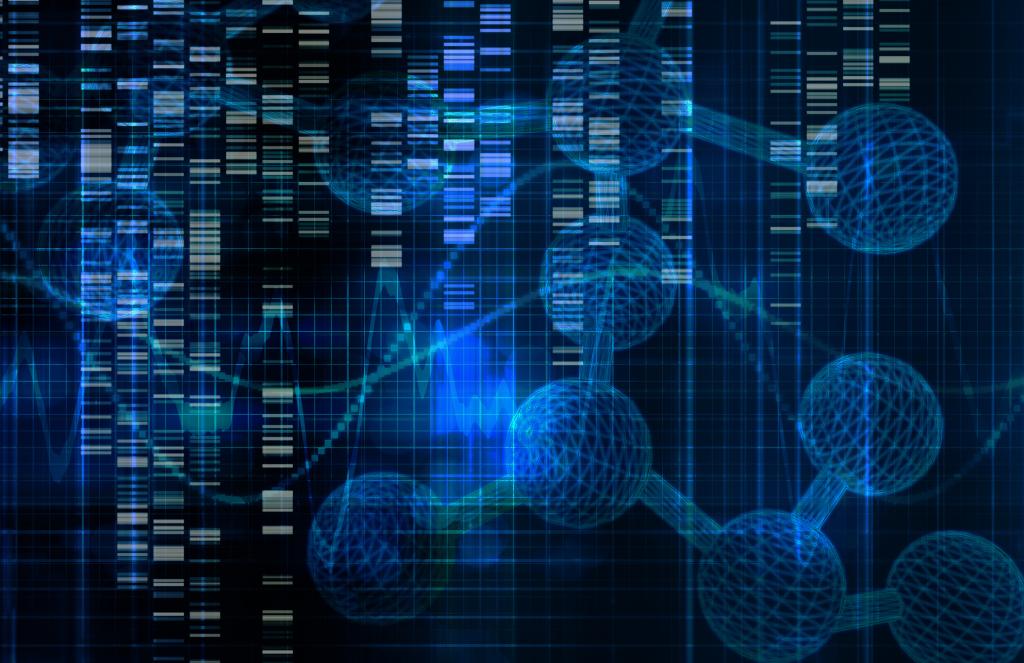Admission CTAs
Mason scientists explore innovative approach to silence HIV in the central nervous system, encourage scientific collaboration
Research team receives $2.95M in NIH funding to study cell-derived extracellular vesicle mediated epigenetic HIV silencing in the brain.*
A collaboration including researchers from the Center for Infectious Disease Research at George Mason University is developing and characterizing a highly innovative modular approach that will utilize extracellular vesicles to deliver anti-HIV genes to virus-infected cells in the brain in an effort to epigenetically silence HIV expression in a long-term and stable manner.
Fatah Kashanchi, professor of Virology and Director of the Mason Science Laboratory of Molecular Virology, is the primary investigator on the National Institutes of Health funded collaboration which also includes Mason researchers, Yuriy Kim, Anastasia Marie Williams, and Heather Branscome; Lenny Schultz, a professor from The Jackson Laboratory; and Mason Science affiliate faculty, Kevin Morris, professor and director at The Griffith University Cell and Gene Therapy Group, Menzies Health Institute School of Pharmacology and Medical Sciences, in Queensland, Australia.
The methodology incorporates extracellular exosome delivery. Kashanchi said the effort could be likened to a package delivery. “The team is creating packages that are sent directly to a specific address within the central nervous system, perhaps to the brain ‘zip code’ or to the lymph nodes.” This package will change the actual structure of that viral genome in the way it twists and turns so it can no longer be active. “For example, think of a normal double helix, then change the structure so that DNA is no longer usable, effectively silencing it with no side effects,” Kashanchi said. This silencing period would be in effect for the individual’s lifetime.
This method may also lead to a therapeutically relevant means to not only control HIV/HAND, (HAND is an HIV associated neurocognitive disorder that impacts memory and thinking), but could usher in a new highly innovative methodology that controls the epigenetic state of those genes involved in various other human diseases.
Kashanchi received $631,369 of the anticipated $2.95M from the National Institutes of Health for this research. Funding began in August 2023 and will end in late May 2028.
This and other breakthrough research efforts will be discussed in more detail during the upcoming annual meeting of the American Society of Intercellular Communication, (ASICbio.org), scheduled to occur from October 12 to 15, 2023.
As President of the ASIC, which was established in January 2021, Kashanchi and other top scientists from across the globe will convene to accelerate this important research of emerging mediators and pathways of intercellular communication (IC) beyond the scope of the existing societies. The meeting will focus discussions on extracellular vesicles (EV), particles, biomolecular condensates, and RNA (EV/EP/ExRNA) and other complex pathways of molecular exchange. Incorporated into the yearly ASIC meetings and workshops are opportunities to connect and promote the inclusion of under-represented minorities and reduce the impact of gender or other bias. By changing the very culture of science using evidence-based approaches, the ASIC seeks to advance diversity and eliminate barriers to recruitment, to foster successful career transitions, and to improve representation in academic leadership positions.
The location of the meeting (Bolger Center; Potomac, MD) provides a platform that allows direct communication between PIs and program officers from government agencies with interest in EV research including NIH, NIST, FDA, and NSF.
In addition, Kashanchi and his team received financial support from the Virginia Innovation Partnership Corporation’s Commonwealth Commercialization Fund (CCF) and entrepreneurship training through the National Science Foundation’s Innovation Corps (or I-Corps) program. According to its website, the CCR identifies ‘technologies with a high potential for economic development and job creation that position the Commonwealth (of Virginia) as a national leader in science- and technology-based research, development, and commercialization.’
The NSF I-Corps immersive training helps scientists like Kashanchi transform important scientific inventions to rapidly provide both economic and societal benefits.
“The I-Corps training Fatah attended establishes connections between Mason Science faculty, and graduate and undergraduate researchers and the broader Commonwealth of Virginia business and entrepreneurial ecosystems,” said Ali Andalibi, Senior Associate Dean of Mason’s College of Science.
Entrepreneurs, researchers, technologists, business leaders, and various federal and national organizations work alongside Mason faculty and innovators in partnerships that expand opportunities for the broader community. Mason Science collaborations, including those noted here, have resulted in interdisciplinary centers, institutes, and programs that are often completely unique or the first of their kind.
